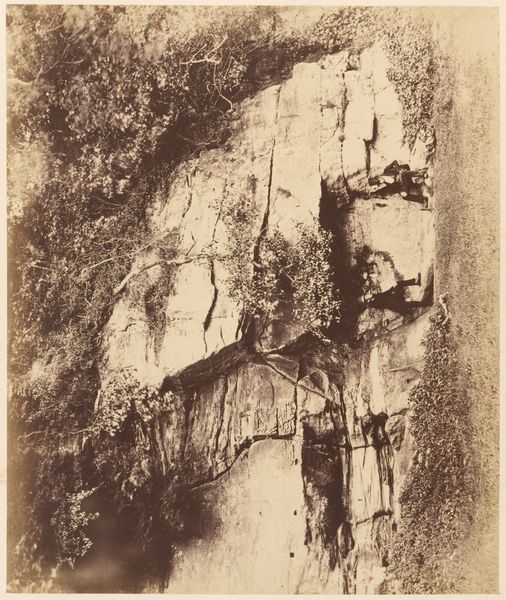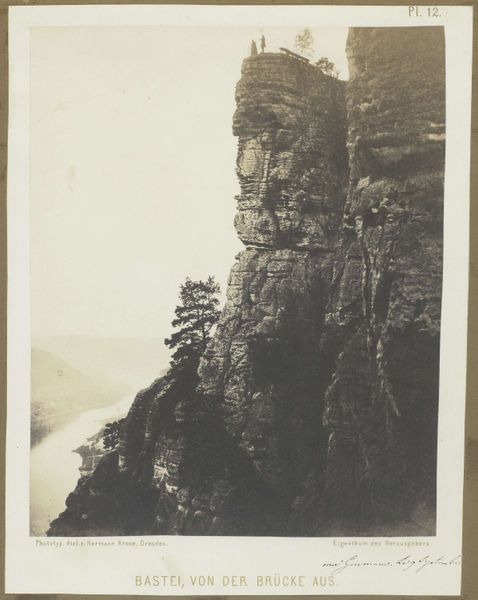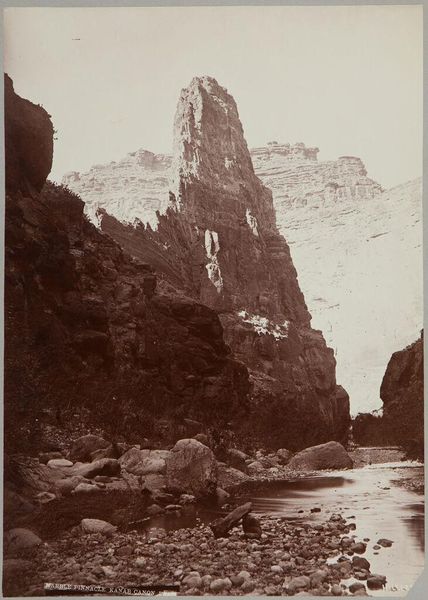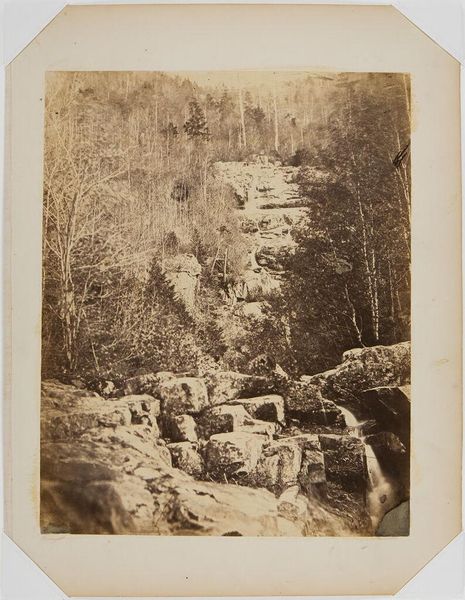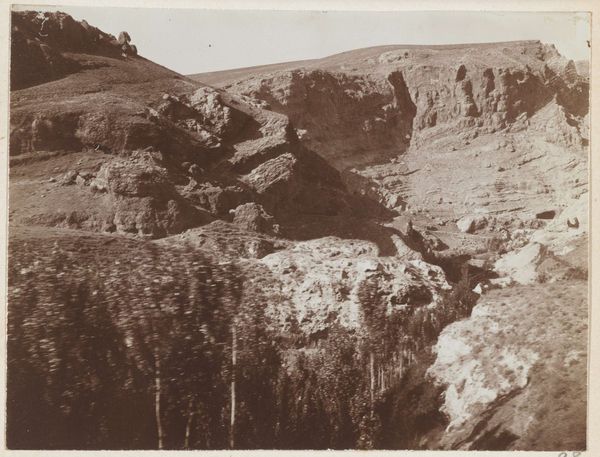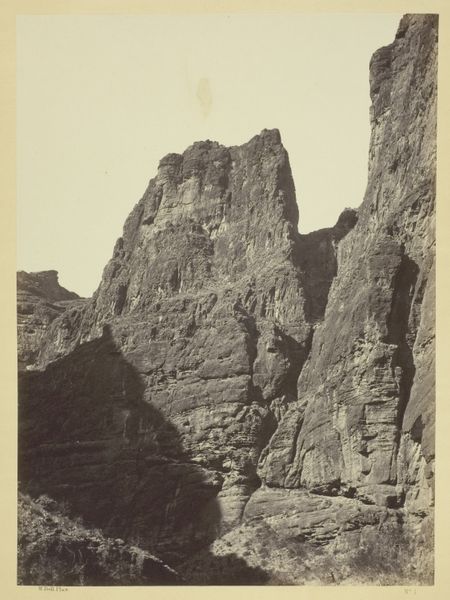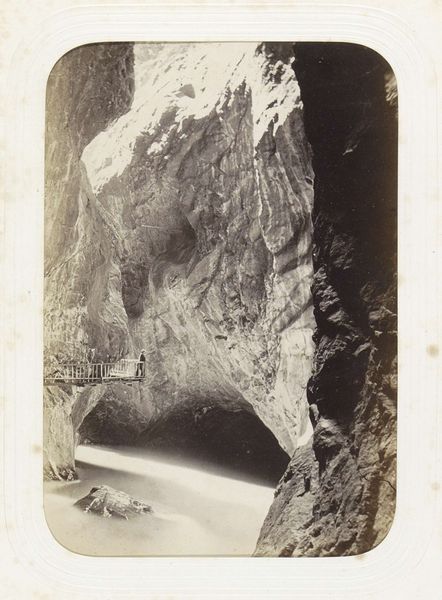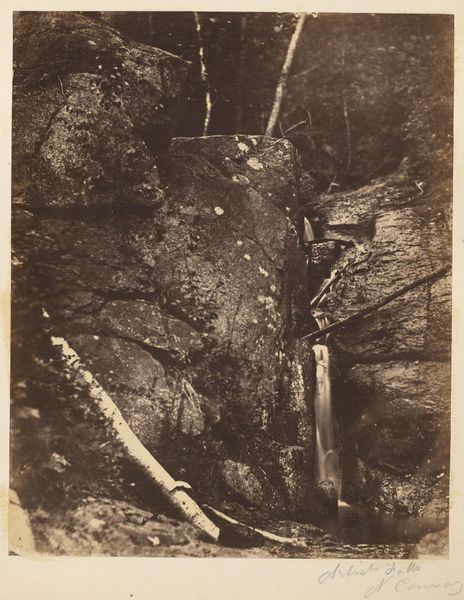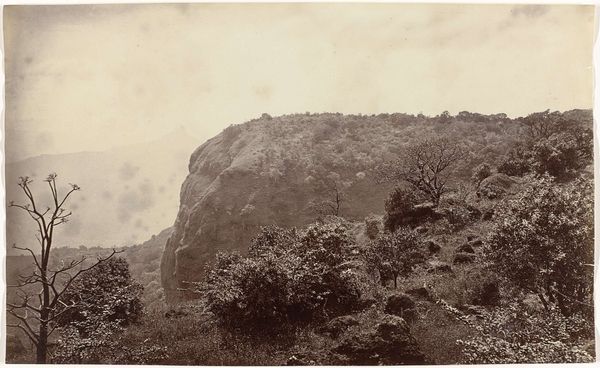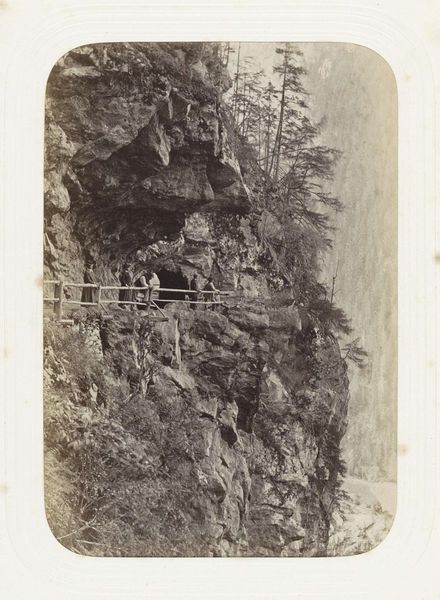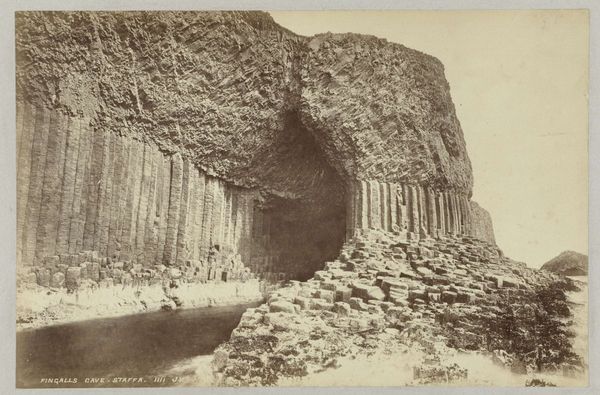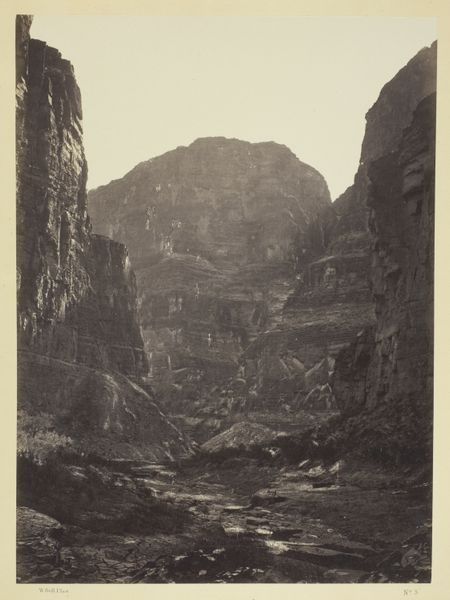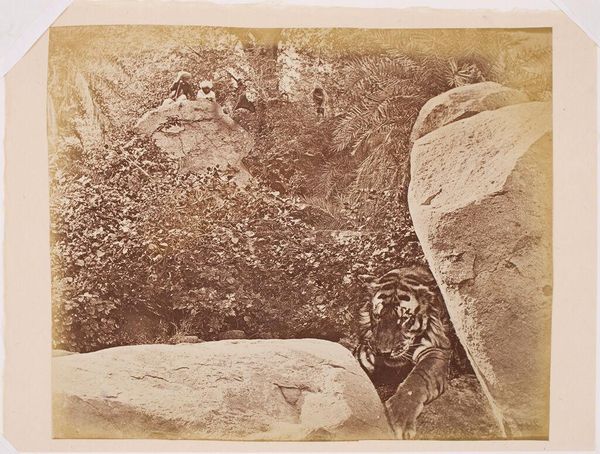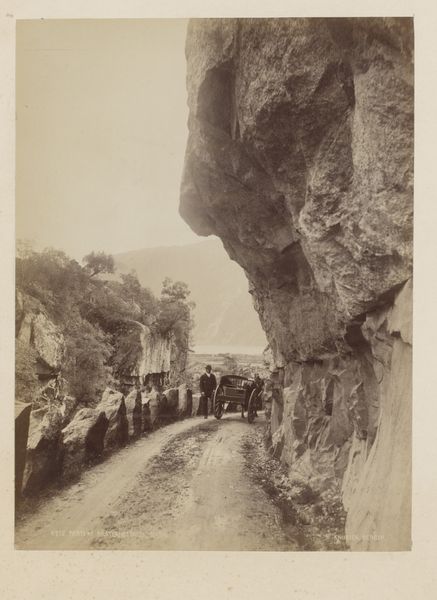
photography, photomontage
#
landscape
#
charcoal drawing
#
photography
#
photomontage
#
orientalism
#
history-painting
Dimensions: height 320 mm, width 261 mm
Copyright: Rijks Museum: Open Domain
Editor: This is "Crag with Inscription on the Dieng Plateau", a photograph dating to around 1864-1867 by Isidore Kinsbergen. It strikes me as a documentation of something, but also almost staged, with the very deliberate placement of the lettering on the rock face. What do you make of it? Curator: It’s a fascinating example of Orientalism in photography. Consider the social context: Kinsbergen was working in the Dutch East Indies. This photograph wasn't just a neutral recording, but a product deeply intertwined with colonial power. Editor: Colonial power? How so? Curator: Think about it. The “inscription” itself. Whose language is that? Who gets to decide what’s recorded and how? The very act of photographing and documenting this crag puts it within a Western framework of understanding and control. This becomes another means to reinforce Dutch presence in the region. It suggests scientific observation, perhaps, but simultaneously a cultural imposition. Do you see the visual dynamics at play? Editor: I see what you mean. The composition positions the viewer, likely a European audience, as separate from, yet also dominant over, this Indonesian landscape and its history. Curator: Exactly! The image performs a kind of visual possession. It claims to capture the ‘truth’ of the place but ends up constructing a narrative that suited colonial interests and perpetuated exoticising tropes. What appears ‘authentic’ is, in fact, meticulously constructed. Editor: That makes me reconsider my initial view of it as just a straightforward document. I now see the layering of political meaning. It's a powerful reminder of how photography can be a tool of empire. Curator: Precisely. Hopefully next time you encounter seemingly straightforward landscape imagery, you’ll question who created the image, for what purpose, and what power dynamics might be subtly encoded within.
Comments
rijksmuseum almost 2 years ago
⋮
Stone inscriptions are important for reconstructing the history of Java. Often they are also works of art in themselves. These large letters carved on a crag on the Dieng Plateau are highly decorative. At the top is a number corresponding to the year 1134 of the Shaka Era, or 1202 CE.
Join the conversation
Join millions of artists and users on Artera today and experience the ultimate creative platform.
